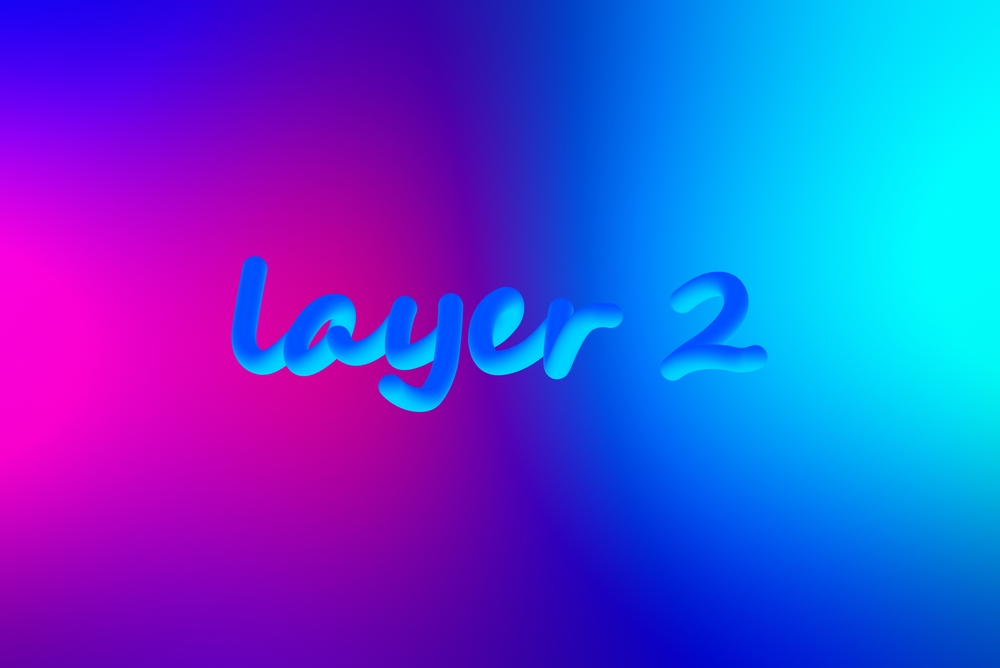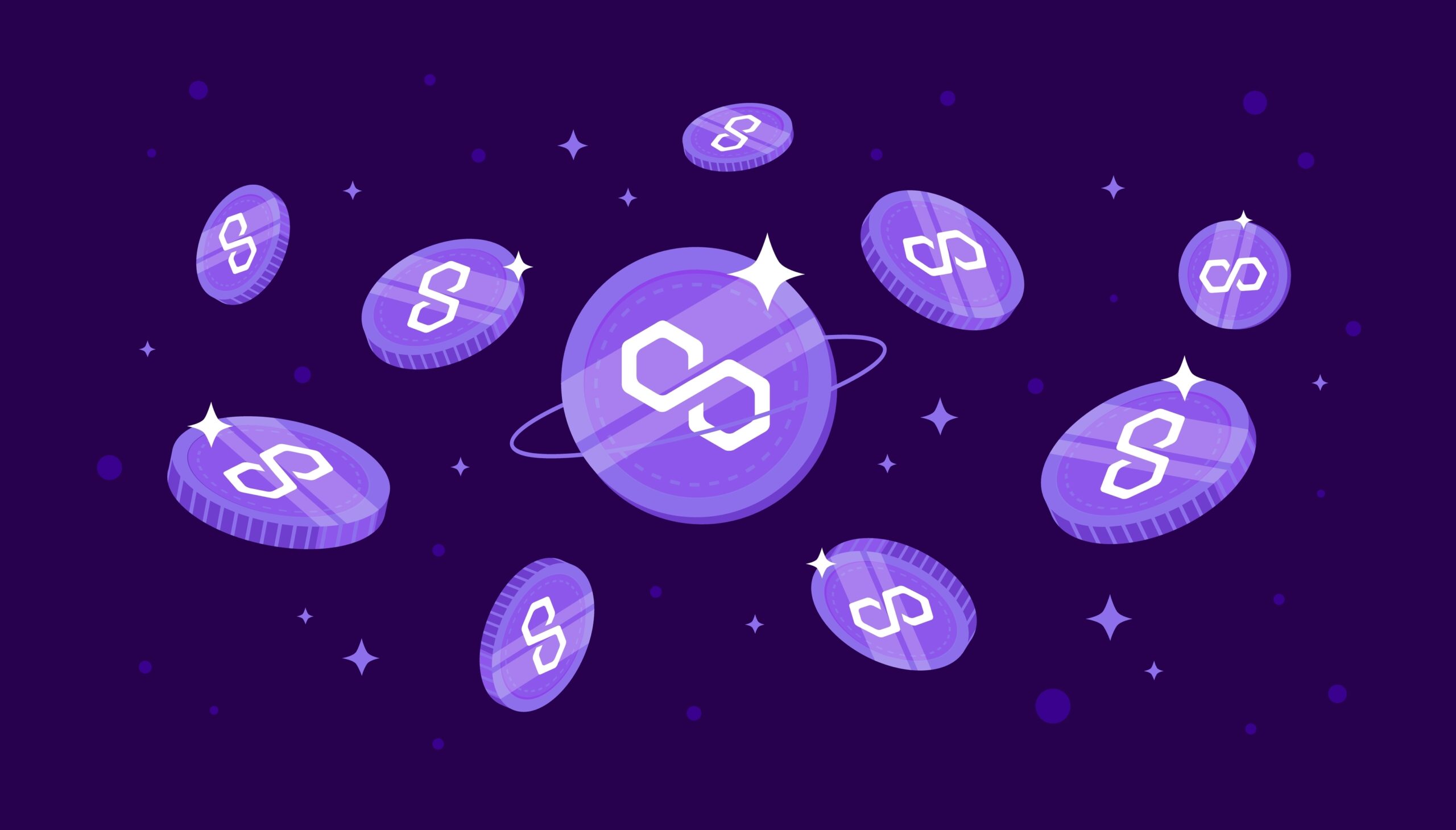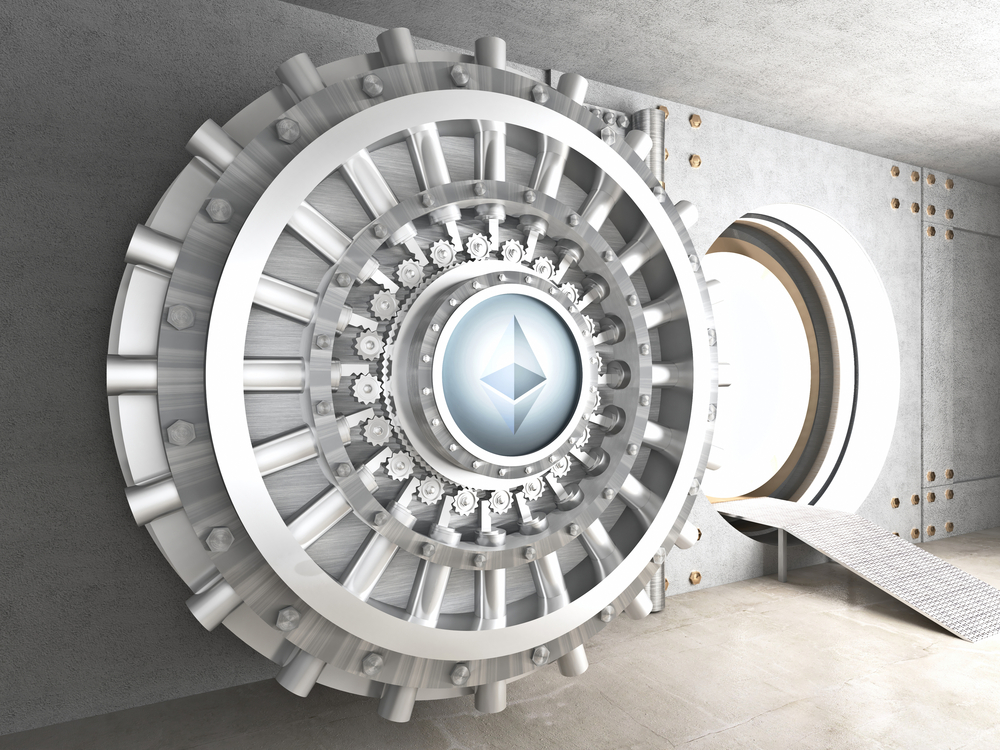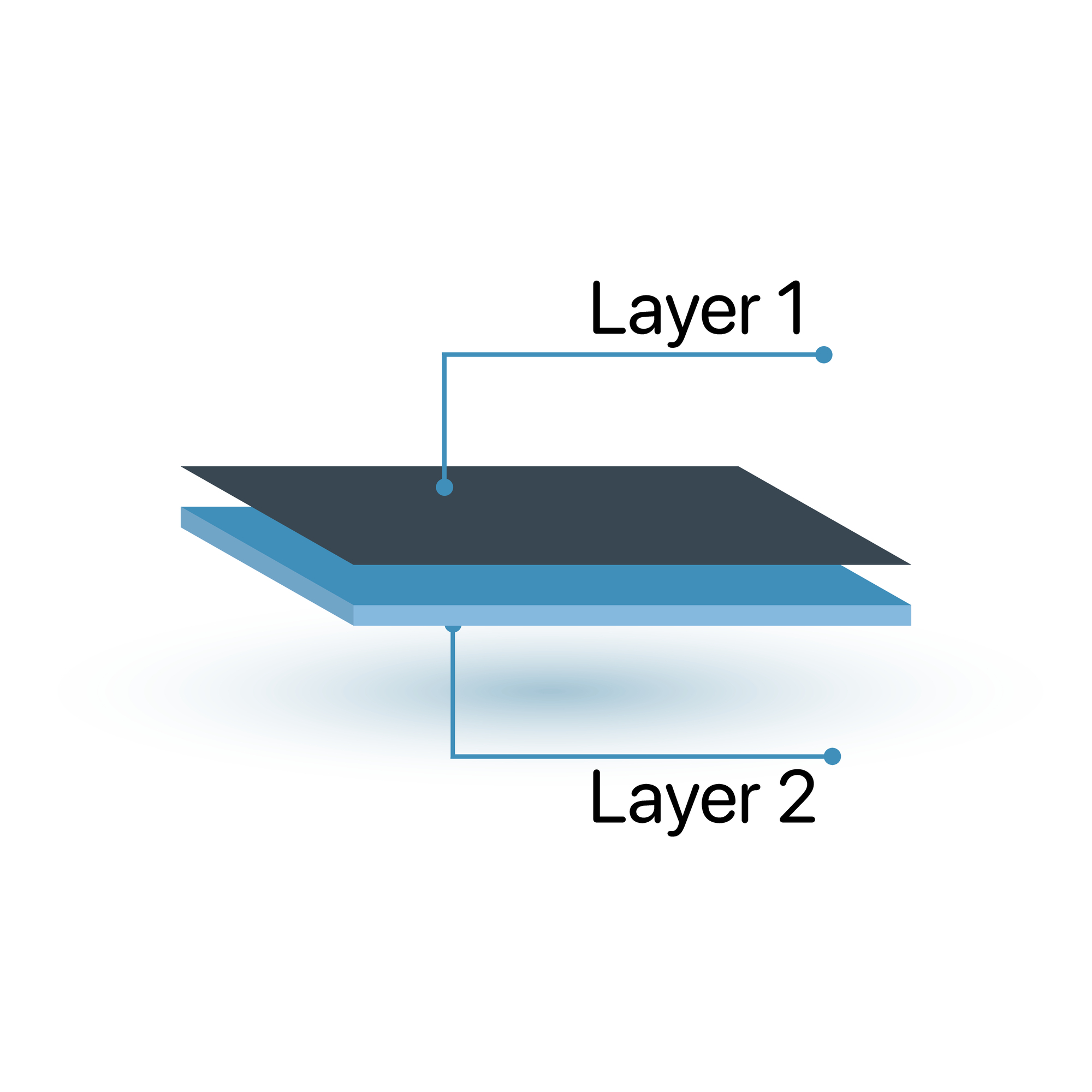Understanding Layer 2 Solutions in Blockchain

Have you ever noticed that sending crypto transactions sometimes feels like watching paint dry? Even worse, those unexpected, wallet-busting fees when you’re sending even small amounts of Bitcoin or Ethereum?
Trust me, you’re definitely not alone! As someone who has tried and tested countless blockchain apps for Cryptolinks.com, I regularly face these frustrating issues myself. And yes, there’s actually a solid reason why this happens—it’s all about scalability.
Blockchain Scalability Issues: Why Transactions Are Slow and Fees High?

When I first stepped into the cryptocurrency space several years ago, I rarely worried about high transaction fees or slow confirmation speeds. It was fast, reliable, and wallet-friendly. What’s changed?
The reality is, as crypto and blockchain adopted a mainstream following and started attracting millions of daily users, networks like Ethereum and Bitcoin found themselves seriously overwhelmed. Their current infrastructure—what we call Layer 1—just wasn’t designed to handle such massive demands. Imagine a tiny bridge built for neighborhood walkers now trying to support rush-hour city traffic. It just can’t hold up effectively.
These huge traffic jams result in overloaded networks, skyrocketing fees, and frustratingly slow transaction confirmations. In fact, Ethereum fees have occasionally spiked so high that, at times, I’ve ended up paying more on fees alone than on the actual purchase!
Don’t just take my word for it. A recent analysis found Ethereum’s average transaction fees peaked at nearly $70 in 2021, making small crypto transactions almost financially pointless.
Layer 2 Solutions to the Rescue!
Thankfully, blockchain developers recognized this frustrating bottleneck and innovated an impressive solution to help ease the congestion: Layer 2 solutions. Think of Layer 2 as an extra road built above that tiny crowded bridge, accommodating heavy traffic smoothly and efficiently.
With Layer 2 solutions, most transactions happen off-chain—meaning they’re handled separately before connecting back to the main blockchain later. No longer do you have to put your crypto activities on hold or pay a fortune just to send transactions.
From my personal experience at Cryptolinks, I’ve seen firsthand how Layer 2 can dramatically cut costs by over 90% and boost transaction speed by multiple factors. Simply put, it’s revolutionizing blockchain convenience.
Curious about how exactly this amazing tech works to make blockchain both cheaper and faster? Keep reading, because the next part unpacks this exciting innovation step-by-step!
What Exactly Are Layer 2 Solutions and How Do They Work?

You know, whenever I talk about layer 2 solutions with my crypto enthusiast friends, I often see eyes glazing over—at first. But that’s usually until the moment I say, “Imagine you’re at the grocery store and instead of paying for each item separately, you pay once for the whole basket.” Suddenly, everyone gets it. That’s essentially what Layer 2 solutions do—they bundle transactions together somewhere off the main blockchain and then finalize the entire batch on the main network all at once.
Layer 1 vs Layer 2: The Difference Explained Clearly
This has to be the simplest way I’ve used to understand it:
- Layer 1: Think of Ethereum, Bitcoin, or another base blockchain as the primary highway. Overcrowded, slow-moving at rush hour, and filled with traffic jams due to millions of drivers (users) wanting to get on the road simultaneously.
- Layer 2: These are the express lanes or side routes that allow you to bypass heavy traffic. They process your transactions away from the main blockchain (the congested highway) and then deposit them back safely and quickly onto Layer 1 when ready.
This dramatically reduces congestion and fees without taking away the core security that blockchain technology thrives on. It’s like having your cake and eating it too!
In fact, researchers from Ethereum.org revealed that Layer 2 solutions can achieve thousands of transactions each second, compared to Ethereum Layer 1’s roughly 15–30 transactions per second. The numbers speak for themselves!
Simplifying Transactions With Off-Chain Processing
One real-world example that always comes to my mind is buying a coffee with crypto. Layer 2 solutions make those quick, everyday transactions a reality by removing the hassle of high fees and slow transactions. They create off-chain environments—like smaller roads alongside our overloaded main highway—so your payments can smoothly happen without paying exorbitant gas fees each time.
“Layer 2 doesn’t just improve blockchain; it enhances our daily lives by making cryptocurrency usable in everyday situations.”—Vitalik Buterin, Ethereum’s Co-founder
If you were ever frustrated waiting an hour for Ethereum to complete a simple electronic payment, you’re going to love how layer 2 changes the game. And this is only scratching the surface. Curious to learn how exactly these Layer 2 solutions like Rollups, Sidechains, and State Channels achieve these remarkable results?
Let’s keep rolling, because that exciting explanation is coming up next.
Types of Popular Layer 2 Scaling Solutions

If you’re dipping your toes into crypto, terms like “Layer 2” can sound a bit tech-heavy at first. I felt the same way initially—but once I understood these key types, it made a world of difference for me. Let me break down the main Layer 2 solutions in a simple way:
Rollups (Optimistic and ZK)
Rollups pack hundreds, even thousands of transactions together, bundling them neatly before sending them back to the main blockchain in one compressed batch. Simply put, they reduce congestion by summarizing all those transactions into one tidy package.
- Optimistic Rollups: Assume transactions are valid by default (optimistic approach), only verifying them closely if disputes arise. This makes them significantly faster and lower cost, since minimal processing power is used initially. Arbitrum and Optimism, which you might have heard of, famously employ this solution.
- ZK Rollups (Zero-Knowledge Rollups): These intriguing rollups use cryptography magic (called Zero-Knowledge proofs) to swiftly validate transactions without showing every detail openly. StarkNet and zkSync, for instance, use this method to scale Ethereum transactions securely—some analysts from Ethereum.org even suggest ZK rollups can bring transaction throughput from just 15 transactions per second (on Ethereum layer 1) up to over 2,000!
“Zero-Knowledge technology could revolutionize crypto by combining both privacy and scalability—no trade-offs needed.” —Vitalik Buterin
Sidechains
Imagine a sidechain as your parallel blockchain running next to Ethereum. Transactions happening on sidechains are separated from the main blockchain. Users can smoothly shift tokens back and forth, making things way quicker and way cheaper. Polygon (previously Matic Network) is a star example of how sidechains effectively accelerate Ethereum’s performance.
State Channels
Think about state channels as private express lanes for frequent transactions between two parties. Rather than clogging up the main blockchain, they simply track final balances after several off-chain exchanges. Remember the Lightning Network on Bitcoin? It operates using this very principle—providing rapid micropayments at minimal costs, making Bitcoin suitable even for daily small transactions like buying coffee (trust me, sounds strange, but it’s possible).
These Layer 2 scaling approaches aren’t just fancy crypto tech-talk—they directly impact your user experience, transaction speeds, and costs. But how exactly do these solutions play out in real life? Is there concrete proof they truly live up to expectations? Don’t just take my word for it—let’s explore some fascinating real-world examples together…
Real-world Examples of Layer 2 Solutions

Talking theory can be interesting, but let’s be honest—what really gets exciting is seeing these Layer 2 solutions actually in action. Over the years, I’ve reviewed countless crypto projects and platforms, and I’ve encountered some Layer 2 solutions that truly change the crypto user experience for the better. Let me share a few impactful examples with you.
Polygon (formerly Matic Network)
If you’ve ever hesitated before sending Ethereum due to nerve-wracking fees, you’ll immediately appreciate Polygon. Originally known as the Matic Network, Polygon acts as a powerful sidechain scaling solution built on Ethereum. Here’s why I think it’s impressive:
- Fast: Where Ethereum can take minutes, Polygon typically completes transactions in just a few seconds.
- Low Cost: Transactions costing $50 or more on Ethereum may cost just a fraction of a cent on Polygon.
- User-Friendly: Popular protocols like Aave, QuickSwap, and Decentraland rely heavily on Polygon—making it a genuine real-world solution for ordinary crypto enthusiasts.
“Polygon reduces Ethereum gas fees by over 99% and speeds up transactions dramatically—it’s the Layer 2 solution users have been dreaming about.” – Decentralized Finance Report, CoinDesk 2022
Arbitrum and Optimism
Another exciting innovation comes from Arbitrum and Optimism, both leveraging optimistic rollups. Readily embraced by developers, DeFi traders, and crypto enthusiasts for their remarkable results, their success is no accident:
- Reduces ETH network burden: By bundling off-chain transactions, these solutions drastically reduce Ethereum blockchain congestion.
- Lower Fees: Significantly cheaper fees enhance users’ everyday crypto experiences.
- Trusted by Mainstream Protocols: Iconic platforms like Uniswap, SushiSwap, and Curve Finance are actively deploying on these Layer 2 solutions, proving they aren’t just theoretical—they’re everyday lifesavers.
StarkNet and ZK Technology
ZK (zero-knowledge) rollups like StarkNet are among the cleverest innovations I’ve tested. The concept of cryptographic proofs might sound technical, but the benefits become instantly clear in practice:
- Smooth Performance: Using fewer on-chain resources means faster transaction speed and easier scalability.
- Robust Security: Zero-knowledge proofs securely validate thousands of transactions offline before posting summaries back to the Ethereum mainnet.
- Backed by Strong Research: StarkNet was developed by top mathematicians and cryptographers, making it one of the most secure and battle-tested Layer 2 methods out there.
These real-world examples are not just interesting showcases—they’re genuine revolutions happening right now. From faster transactions and lower fees to game-changing scalability, Layer 2 is already transforming crypto as we know it.
But are Layer 2 solutions a good fit for your needs? How do you decide when they’re really worth exploring? Keep reading, since I’ll cover exactly that in the next section.
When Should You Consider Layer 2 Solutions?

I’m often asked by beginners and crypto enthusiasts alike: “Should I switch to Layer 2 solutions, or is Layer 1 still enough?” As someone who has personally tested countless blockchain-based services, I can tell you this: it really depends on your usage scenario. Some situations just scream for Layer 2 benefits—and here I’m going to share precisely when these innovative solutions make sense for you.
Micropayments and Everyday Transactions
Have you ever tried sending someone a small Ethereum transaction only to feel shocked at the hefty fee eating into your wallet? Trust me, I’ve been there. Layer 2 solutions truly shine when we’re dealing with frequent, everyday transactions—especially micropayments (those tiny payments you might use for tipping creators, purchasing digital content, or paying for a coffee).
A great real-world example is Loopring’s zkRollup solution, handling thousands of micropayments per second for fractions of a cent each. Studies indicate that reducing this friction in payment boosts overall digital engagement—imagine if tipping online creators cost you next to nothing! Suddenly, micropayment economies become feasible again, opening up immense potential across content creation, media, and digital services.
Decentralized Exchanges (DEXs)
If you’ve ever navigated decentralized exchanges (DEXs), you know how frustrating slow transactions and exorbitant fees can be. I vividly remember waiting nervously for ETH swaps to settle and feeling the sting of fees practically eating away at my crypto spend. Thankfully, Layer 2 solutions have severely improved this experience.
Platforms like Arbitrum and Optimism have significantly boosted performance in leading DEXs like Uniswap by batches of transactions, making trades faster, cheaper, and honestly—far more enjoyable. Imagine placing trades quickly without stressing over high fees, price slippage, or network congestion. This transformed trading efficiency means you won’t miss crucial transactions anymore.
NFT Marketplaces and Games
I’ve followed closely—as I’m sure you’ve done as well—the incredible boom of NFT trading and gaming in recent years. The excitement quickly fades, however, when you can’t afford gas prices or transactions feel frustratingly slow. Enter Layer 2: a literal game-changer in the NFT and cryptocurrency gaming scene.
Take ImmutableX for instance—built specifically for NFTs and blockchain gaming. Games like Gods Unchained and Illuvium utilize ImmutableX to allow instant, zero-gas-fee NFT trades and rapid interactions within games. Just think: no more hesitations before buying collectibles or tokens due to high ETH fees; gamers and collectors alike gain a smoother, headache-free experience.
“The world rewards speed and efficiency. Layer 2 solutions are finally allowing blockchain apps to deliver both.” — Vitalik Buterin
So, are Layer 2 solutions already essential for your use-case—or are you unsure if the time is right?
Keep reading: in the segment below, I’ll reveal the top advantages and help you decide clearly once and for all.
What Are the Main Benefits of Choosing Layer 2 Solutions?

Nothing feels worse than waiting endlessly for a crypto transaction confirmation or seeing outrageous fees chip away your funds. I’ve personally been there countless times, feeling annoyed at the sluggish speed and high costs when buying my morning cup of coffee with crypto or executing a quick trade on a decentralized exchange.
That’s exactly why Layer 2 solutions caught my attention—they fix just that. Let’s check out their key benefits:
Reduced Transaction Fees
Do you remember when gas fees spiked so much on Ethereum that it cost more to claim your Decentraland rewards or send small USDT transfers than they were actually worth? Layer 2 changes this story dramatically. According to a report by CoinMetrics, average Ethereum transaction fees regularly jumped above $20 last year, but with Layer 2 solutions like Polygon or Arbitrum, transaction fees usually drop to mere pennies. Such steep cost reductions allow users to comfortably perform micropayments and frequent transactions without overthinking fees.
“For crypto to achieve real-world adoption, we must bring the transaction fees closer to zero. Layer 2 solutions help us get there.”
This quote from Ethereum’s founder, Vitalik Buterin, perfectly captures this game-changing benefit.
Faster Transaction Confirmations
Waiting 10 to 30 minutes for Bitcoin or even several minutes for Ethereum confirmations can test anyone’s patience, especially when time-sensitive transactions are at stake. Layer 2 accelerates transaction speeds, often confirming transfers in mere seconds. For example, ZK rollups, like StarkWare’s StarkNet or Loopring, validate thousands of transactions off-chain immediately and batch them onto Ethereum later, significantly speeding things up.
Whether you’re trading crypto assets, interacting with DeFi protocols, or playing blockchain-based games—speed makes a huge difference in the quality of your experience.
Infrastructure Support for Mass Adoption
Slow and costly transactions aren’t just inconveniences—they’re tangible barriers preventing mainstream crypto adoption. Think about it: could Ethereum-based applications like games and NFTs realistically go mainstream if each microtransaction took minutes and cost dollars?
Layer 2 solutions like Optimism and Polygon remove these barriers, facilitating millions of affordable transactions per day. Thanks to these innovations, we’ve already seen explosive growth in adoption from communities using crypto creatively. Play-to-earn games like Axie Infinity’s Ronin Network wouldn’t be as popular without Layer 2 scalability. Similarly, the successful operation of OpenSea, the largest NFT marketplace, benefits tremendously from Layer 2 solutions, ensuring millions of transactions happen every month without clogging Ethereum.
But with all these benefits, you might wonder: is there a catch? How secure can Layer 2 solutions really be if transactions get processed “off-chain”?
Let’s check the answer together in the next section—because your funds should stay safe, just as much as fast and cheap.
Understanding Security of Layer 2 Solutions

One big concern that I’m often asked about Layer 2 solutions is simple: “Are they safe enough for me to trust my crypto transactions?”. As an active crypto user myself, I’ve had similar doubts when exploring new blockchain technologies.
Let’s explore the security of Layer 2 solutions clearly, so you know exactly what you’re getting yourself into.
Layer 2 and Ethereum Security
If you’re already using Ethereum, there’s good news: Ethereum-based Layer 2 solutions benefit directly from Ethereum’s powerful security measures. As Ethereum’s main network is highly secure and decentralized, most Layer 2 platforms don’t compromise that protection—instead, they’re cleverly designed to inherit Ethereum’s security strength.
For example, platforms like Arbitrum and Optimism batch numerous transactions and periodically submit secure cryptographic proofs to Ethereum. This means your Layer 2 transactions enjoy the underlying security of Ethereum itself. You’re essentially getting Ethereum-level crypto protection, with the added boost of Layer 2 speed and cheaper transaction fees. Pretty awesome, right?
Decentralization: Does Layer 2 Compromise It?
Another big fraud-related fear is whether Layer 2 sacrifices decentralization. It’s a reasonable worry since decentralization lies at the heart of crypto philosophy.
Here’s the truth: reliable Layer 2 solutions are firmly dedicated to maintaining decentralization. They do this by transparently submitting proof and batches back to the main blockchain. I’ve personally seen Polygon (formerly Matic Network) successfully demonstrate this transparency by regularly publishing transaction batch proofs publicly to Ethereum’s main chain, ensuring the highest level of trust and decentralization.
Research supports this too—security audits conducted on reputable Layer 2 solutions have consistently confirmed their decentralization strategy and protection from central control risks.
“Decentralization improves security because no single entity can unilaterally control or alter transactions” – Andreas Antonopoulos
What Users Can Do to Stay Secure
Okay, you’re probably thinking, “This sounds good, but how do I protect myself on Layer 2?” Great question! As someone who frequently tests crypto networks and platforms, here are some practical security habits I follow and strongly encourage you to practice too:
- Always choose platforms that have completed multiple well-known, independent third-party audits. These prove the platform has been scrutinized by experienced security experts.
- Take time to research for previous security incidents or vulnerabilities. Online forums or sites like GitHub are fantastic places for transparency on these issues.
- Double-check that the Layer 2 solution you select actively communicates their security measures and releases updates to fix vulnerabilities quickly should they occur.
Layer 2 technology has come a long way, keeping the security of popular blockchains at its core. Still, there is always more to learn about keeping yourself protected in the ever-evolving crypto ecosystem.
If you’re committed to crypto safety—and let’s be honest, we all should be—I’d encourage you to continue learning from high-quality resources. Do you want to know which resources I trust and recommend for truly mastering Layer 2 systems?
Additional Helpful Resources for Layer 2 Learning

When I was first diving into the world of Layer 2 solutions, it honestly felt a bit overwhelming. There were many terms, buzzwords, and technical quirks to wrap my head around. That’s when I realized the power of reliable resources. Let me share a couple of amazing educational spots I frequent myself—places that made my own learning curve much smoother.
The Future of Layer 2 Blockchain Solutions: What’s Next?

Over my time reviewing platforms and apps at Cryptolinks.com, I’ve noticed one constant truth: crypto technology never sleeps, and Layer 2 blockchain solutions are no exception. Everyone I talk to in the crypto community wonders about what’s next with Layer 2—and trust me, the future is shaping up to be very exciting.
Layer 2 and Ethereum 2.0: A Harmonious Future?
Ethereum 2.0 has long been discussed as the magical upgrade that promises lower fees, higher scalability, and a faster overall experience. But even after Ethereum transitions fully to Eth2, Layer 2 solutions aren’t going to disappear. Far from it.
According to leading Ethereum researcher Vitalik Buterin, who continues to emphasize this point in his recent posts and talks, Ethereum 2.0 isn’t replacing Layer 2—it’s enhancing it. In other words, Ethereum 2.0 and Layer 2 solutions form a powerful partnership, complementing each other’s strengths. Ethereum 2.0 boosts transaction throughput considerably, but even then, widespread global adoption demands more scale than Ethereum alone can realistically provide. Layer 2 fills that critical gap beautifully.
You can expect future Ethereum improvements, like sharding, to further amplify Layer 2 efficiency. In this powerful synergy, both Ethereum itself and Layer 2 solutions evolve together, making blockchain even smoother, cheaper, and accessible to billions.
Adoption Beyond Ethereum
It’s not just Ethereum focusing intensely on Layer 2 solutions. Even traditionally firm standalone platforms like Bitcoin are looking towards similar off-chain enhancements, using solutions like the Lightning Network to boost transaction speed and reduce fees significantly.
Meanwhile, other blockchains like Solana and Avalanche are actively exploring Layer 2-inspired techniques as well. These platforms already offer extremely fast transactions compared to Ethereum—so why would they even consider Layer 2-like technologies? Simply put, blockchain adoption won’t stop growing anytime soon. To stay competitive, every blockchain is looking for ways to support millions, even billions, of global users without high fees or network congestion. This means Layer 2 scaling isn’t only an Ethereum-focused trend; it’s becoming a universal necessity across the entire crypto space.
Wrapping Things Up: Why You Should Keep an Eye on Layer 2
At the end of the day, I’ve reviewed enough blockchain projects to know that Layer 2 is no passing fad. Instead, it’s becoming integral to the crypto industry’s growth and future usability.
If you regularly trade crypto, explore NFTs, engage with DeFi apps, or game on the blockchain, Layer 2 innovations should matter immensely to you. These solutions don’t only cut your fees and save your time—they unlock new possibilities and business models that weren’t feasible before. Imagine microtransactions becoming truly “micro,” or in-game items bought instantly at near-zero cost. This reality becomes closer every day, thanks to these amazing innovations.
Here’s what makes Layer 2 essential:
- Lower fees: Scalability solutions directly reduce transaction costs, enabling blockchain use-cases like micropayments, streaming payments, and more.
- Instant confirmations: Layer 2 means no more waiting for ages on confirmations. Transactions happen within seconds, radically enhancing user experience.
- Mass adoption support: Blockchain can only truly become mainstream if it handles billions of users without bogging down—precisely where Layer 2 shines.
Over the past few years, I’ve noticed industry leaders increasingly highlight Layer 2 not as an optional feature, but as a core necessity for the blockchain ecosystem’s long-term health. With on-chain data from Ethereum analytics firm Nansen showing steady growth in Layer 2 rollup adoptions—more than $5 billion total value locked (TVL) already—it’s clear this growth isn’t just hype. It’s happening right now.
I’m genuinely excited about the upcoming Layer 2 developments. As always, I’ll track them carefully and update you consistently here on Cryptolinks.com. If you’re as enthusiastic as I am about crypto’s future scalability possibilities, stick around—Layer 2 is just getting started.
